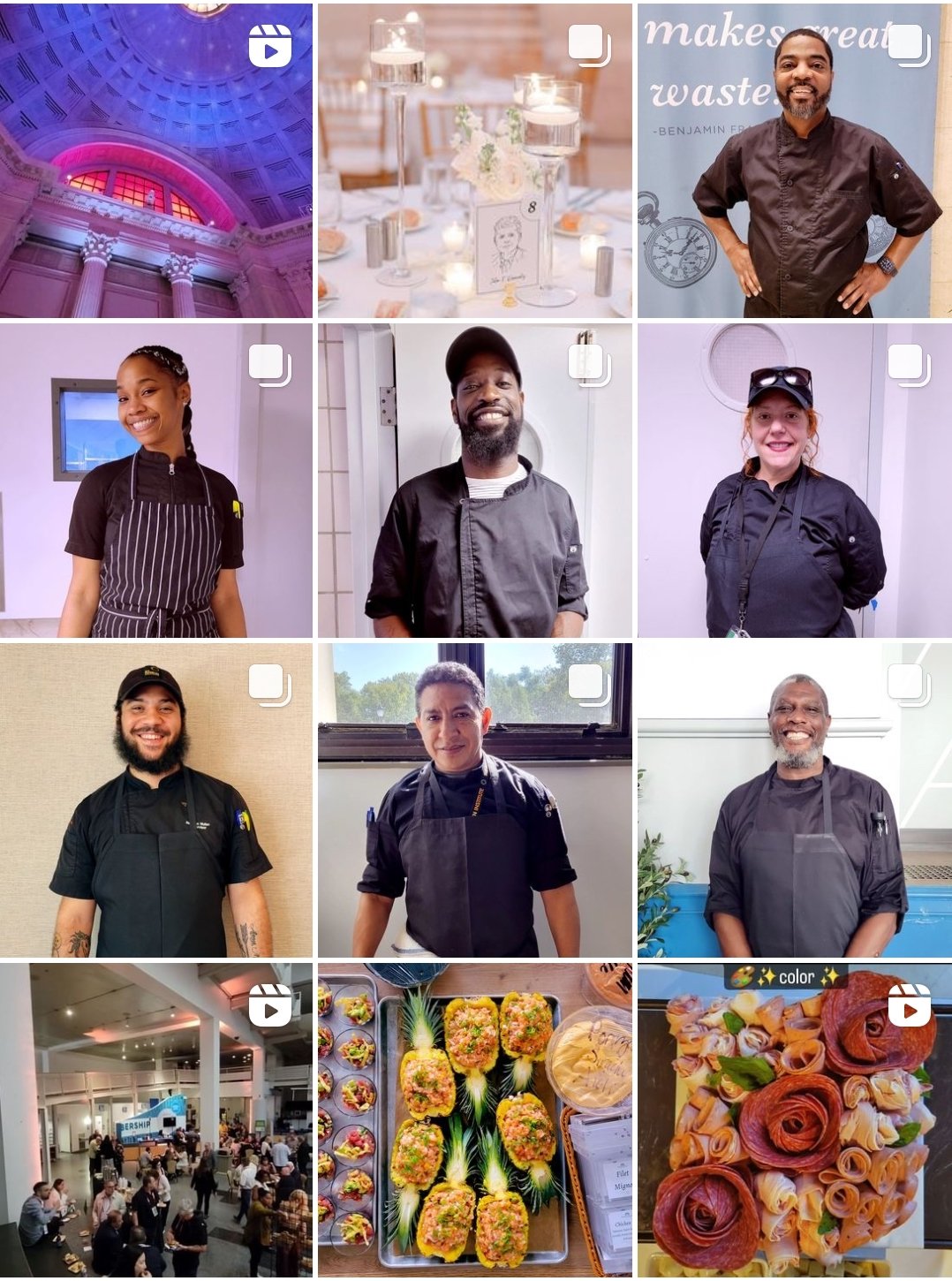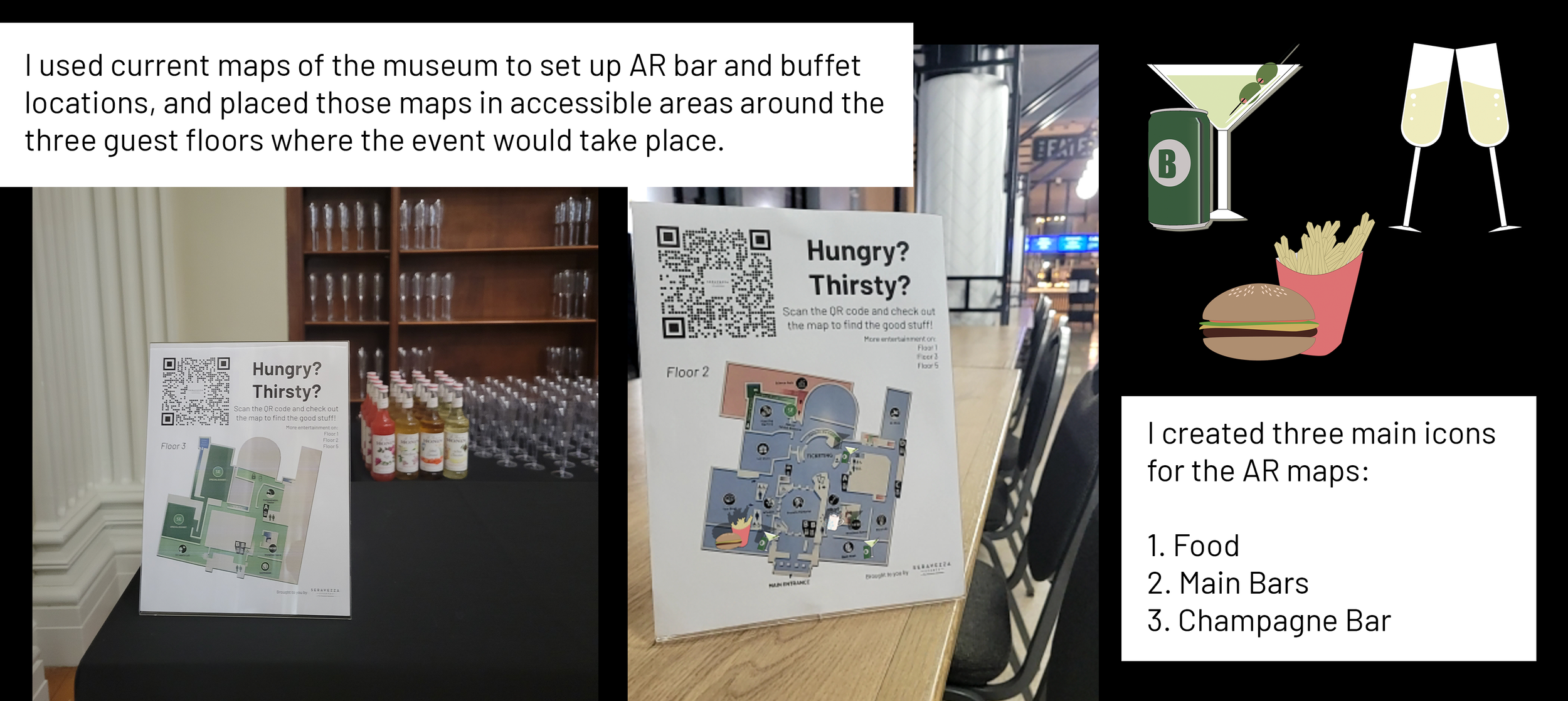SeRAVEZZA EVENTS
I love HOSPITALITY and I love design. I was given an incredible opportunity to fuse these two passions and help rejuvenate a local catering company’s brand.
PROBLEM SPACE:
Seravezza, a catering company located in The Franklin Institute of Science & Technology, needed a larger online presence and more cohesion in their internal design. At the start of this project, they had 28 followers and 1 post, with a massive event quickly approaching at which they wanted to launch a new look.
STRATEGY:
Using social media, new technology, and physical signs in the space, I was able to steadily boost their online presence and add more unity to their internal design.
social media
updated photography styling
Instead of taking bland photos of buffets, I focused more on the food prep: dishes organized on trays before being served, ingredients being set up, and mise en place. I then edited the photos, something I noticed was missing from our competitors.
This took Seravezza’s online image from being just another caterer to an elevated but accessible product focused on getting every detail right.
This, in combination with fresh copy and reels, boosted our perception among potential clientele and prior guests who could rebook services.
building an instagram feed
The opening grid was very important. To create this look, I used a combination of my own photography in the space and team photos from older events.
I also made sure to promote the team itself, celebrating wins - such as ILEA 2023’s Best Catered Event award - and giving some of our culinary team their own spotlights.
metrics
Before launching the new grid at the Philadelphia chapter dinner for International Live Events Association (ILEA) , the team had 28 Instagram followers. After the dinner, that number jumped to 85.
I posted on a regular schedule.
In one month, the feed reached 67.9% more accounts, engaged with 100% more,
and increased followers by 6.4%.
new technology
Catering is not an inherently tech-focused field. This was a huge opportunity to be first on the local catering market to use augmented reality. In 3 1/2 weeks, I built an AR experience for guests, spanning 3 floors, that located 6 bars and 3 dining areas in a web-based experience. WebAR meant that guests did not have to download an app. They could reach the experience using the local wifi, in the browsers of their choosing.
Augmented reality
This experiment was tested at a quarterly event boasting 2,000 guests. it was simple and effective enough to support all QR scans with no lag on wifi.
physical signs
Each event, from 7 guests to 7,000, required individually framed 3x3 signs for each item served on the buffets. This came out to between 10 and 150 signs per week.
I created a universal template, so that item names and descriptions could be dropped in quickly. This cut the time spent producing signs down by 2/3.
Above is a sign for spring rolls. Each sign contains the company logo, the item name, the description, and any dietary restrictions/allergens. I created the dietary icons shown.
Each week, all frames were unpacked from the previous week’s signs, thoroughly cleaned, and organized.
It may seem simple, but visual clarity is incredibly important for guest comfort. A small change like creating visual cohesion in the signage makes a massive difference in how guests enjoy an event and the food and drinks served there.
summary
The updates in social media, the use of new technology, and cohesion in the signs for each event all worked together to increase team and guest comfort, create better guest clarity in what seravezza served them at events, and build trust between Seravezza and current and future guests.








